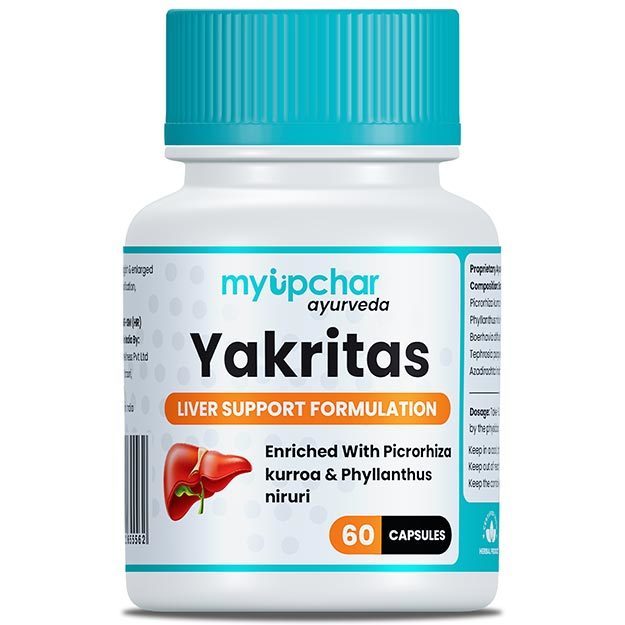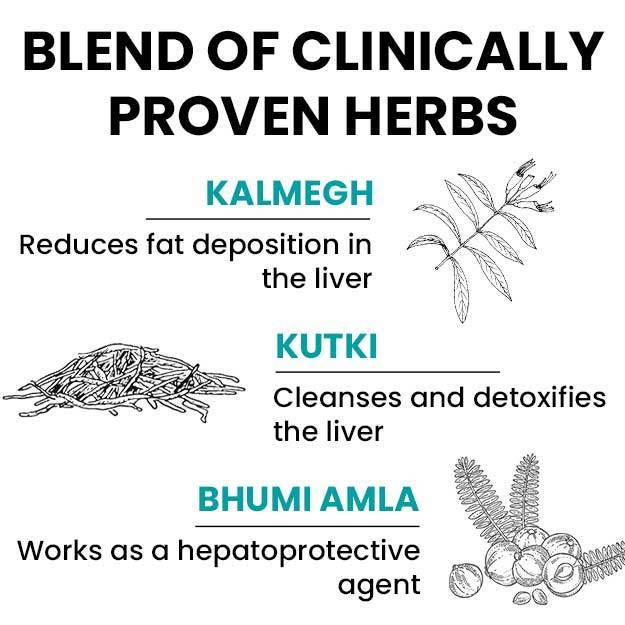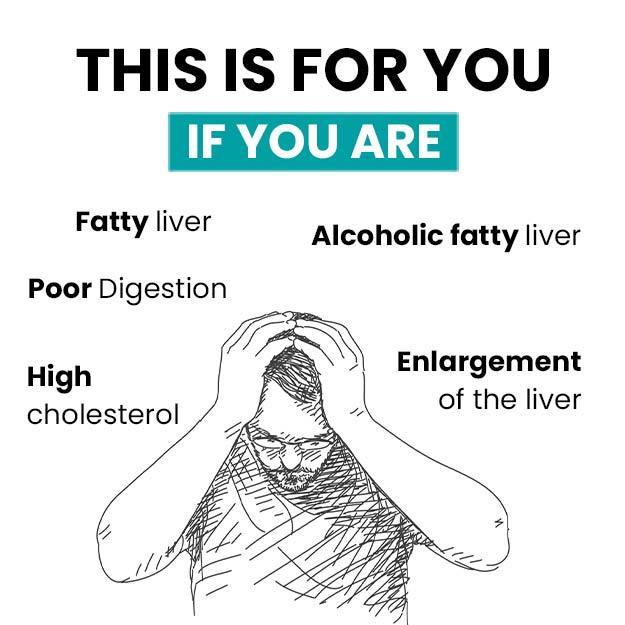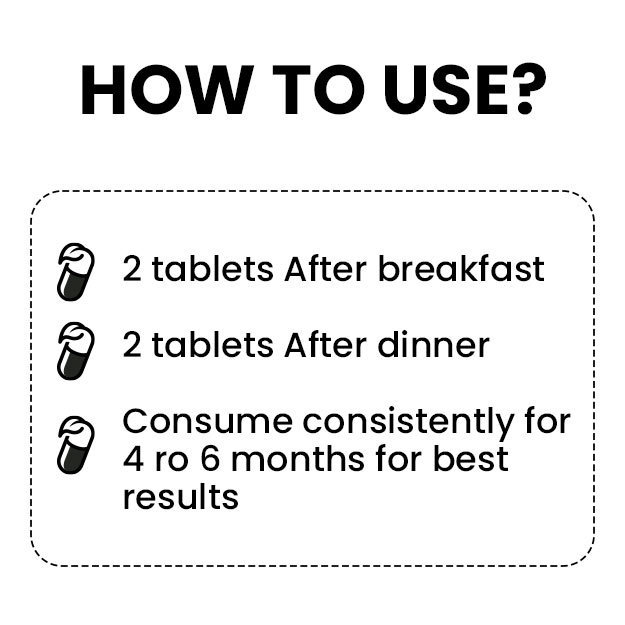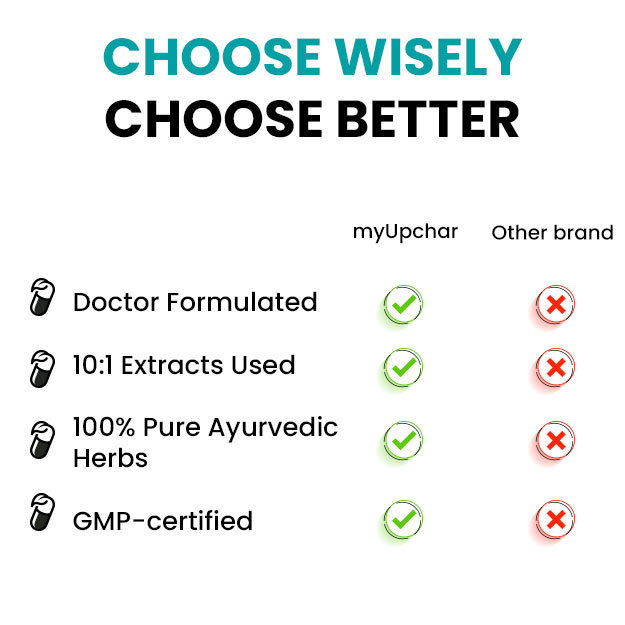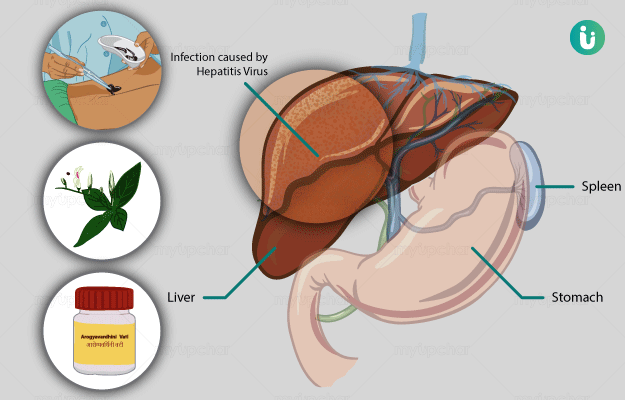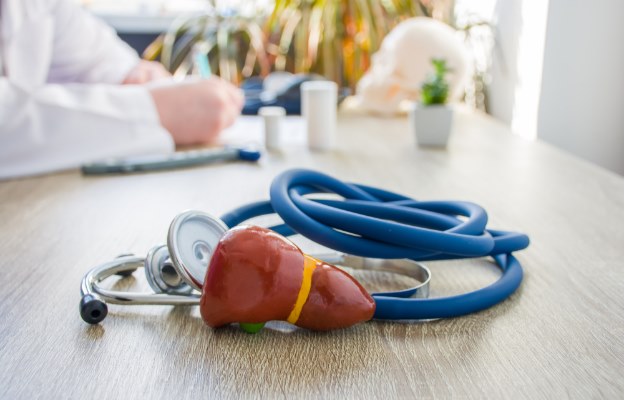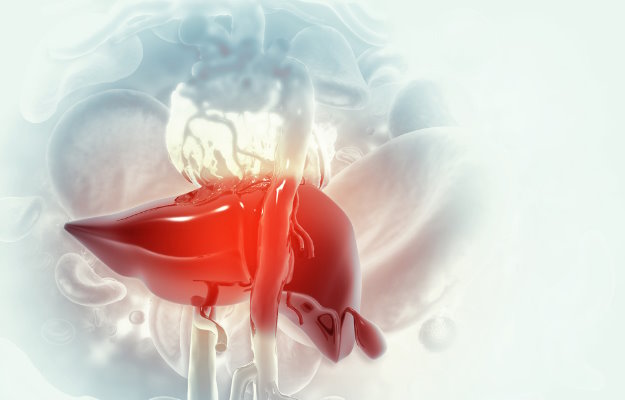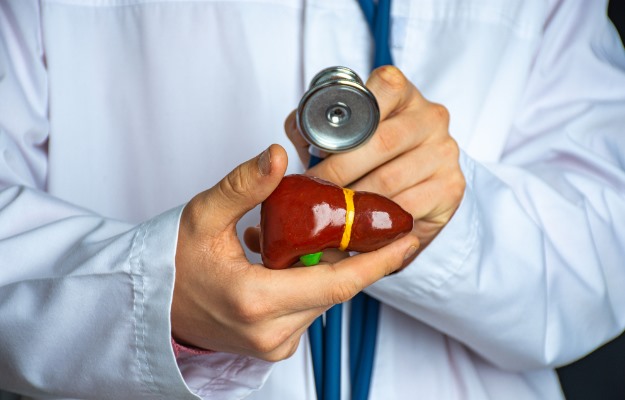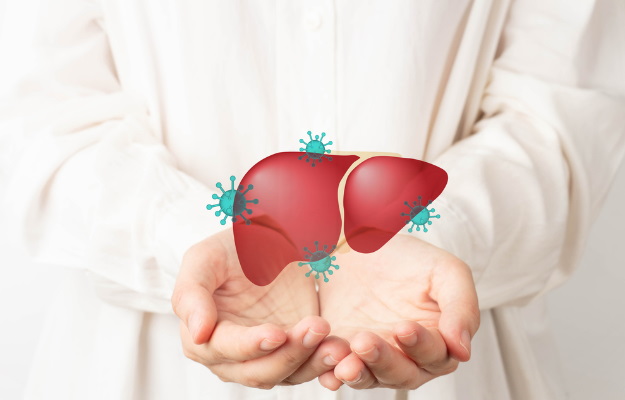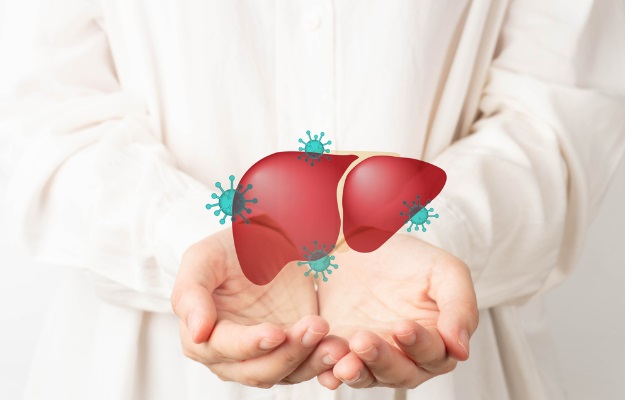Hepatitis is an inflammation of the liver that can be infectious (viral, bacterial, fungal or parasitic) or non-infectious (caused by alcohol, drugs, autoimmune diseases or metabolic diseases). Viral hepatitis is the most common and is classified into five basic types - A, B, C, D and E. Among these, Hepatitis A, B and C are seen more frequently, it causes an acute form of hepatitis which shows up as jaundice, malaise, fatigue, abdominal pain and nausea. However, this acute infection can lead to a chronic infection that manifests as liver cirrhosis and hepatocellular carcinoma (liver cancer). Hepatitis is often diagnosed with very high aminotransferase (an enzyme produced by the liver) levels and hyperbilirubinemia (high bilirubin in urine). Symptoms range from dark yellow urine to yellowish nails and eyes, depending on the severity of the consequent jaundice.
Homeopathic remedies stimulate the immune system of the patient and provide anti-hepatotoxic (acts against liver toxicity) action to clear the condition from its roots. The remedies that are generally used in the treatment of hepatitis are aconitum napellus, bryonia alba, chelidonium majus, hepar sulphur, lachesis mutus, mercurius solubilis, phosphorus, nux vomica, lycopodium clavatum, carduus marianus, ceanothus americanus, chionanthus virginica and natrium sulphuricum.
(Read more: Liver function test)
- Homeopathic medicines for hepatitis
- Dietary and lifestyle changes for a hepatitis patient as per homeopathy
- How effective are homeopathic medicines and treatments for hepatitis
- Side effects and risks of homeopathic medicine and treatments for hepatitis
- Takeaway
Homeopathic medicines for hepatitis
- Bryonia Alba
Common Name: Wild hops
Symptoms: Bryonia alba works on all the mucous membranes (inner lining of body organs), and it affects the right side of the body more than the left side. Symptoms that can be treated with this remedy are:- Swelling or inflammation of the liver
- Sore and tense appearance of the liver region
- Burning, stitching pain in the abdomen that worsens with putting pressure on the area, coughing or even breathing
- Abdomen feels tender to touch
Symptoms of this remedy worsen in the morning and in hot weather, by the application of something warm on the abdomen area, and with motion, exertion, and touch. The patient feels sick and faint soon as he/she tries to sit up. However, these symptoms improve by lying on the painful side, with the application of pressure, by taking adequate rest and after consumption of cold things.
- Chelidonium Majus
Common Name: Celandine
Symptoms: Chelidonium Majus is one of the most well-known remedies for liver problems. The primary indications of this remedy include jaundiced yellow skin and constant pain under the lower part of the shoulder bone. Other symptoms that indicate a need for this remedy are:- Gallbladder colic
- Distention of abdomen
- Hard stools
- Enlarged liver
Symptoms worsen in the morning, with motion, touch, and change of weather. Symptoms improve after dinner and from the application of pressure.
- Hepar Sulphur
Common Name: Hahnemann’s calcium sulphide
Symptoms: This remedy is known to suit those who are prone to swollen glands, weak muscles, and unhealthy skin that is prone to eruptions. Conditions indicating treatment with this remedy are:- Stitching pain in the liver region on movement - walking, coughing, breathing or touching
- Abdominal distention
- Chronic conditions of the abdomen
Symptoms treated by this remedy generally worse by dry and cold air, touch, and on lying on the painful side.
Improvement is observed in humid weather, from warmth and post meals.
- Lachesis Mutus
Common Name: Bushmaster
Symptoms: Lachesis mutus is especially suited to drunkards. This remedy can be given to individuals with the following symptoms:- Sensitivity in the liver region
- Inability to tolerate anything around the waist
- Abdominal pain
Symptoms are worse on the left side and in the spring season, they worsen after sleep, by application of pressure or constriction around the affected region. The person feels better with warm applications. Lachesis mutus derails the coagulation system, hence, those who take bushmaster tend to bleed easily.
- Mercurius Solubilis
Common Name: Quicksilver
Symptoms: Quicksilver affects every organ and tissue in the body, and is powerful enough to cause inflammation of the tissues, cell death and decomposition of blood (sepsis and increased bleeding). However, this powerful mineral is converted into a medicinal form using the principles of homeopathy. Symptoms that indicate a need for this remedy are:- Stabbing pain over the liver region with chilliness
- Boring pain in the right groin
- Flatulent distension in the abdomen with pain
- Enlarged and inflamed liver, which is hard and sore to the touch
- Jaundice
Symptoms worsen at night, with wet or damp weather and perspiration, by lying on the right side, and with warmth.
- Phosphorus
Common Name: Phosphorus
Symptoms: Symptoms that can be treated with this remedy are:- Feeling cold
- Sharp, cutting pain in the abdomen
- Weak, empty feeling in the abdominal cavity
- Congestion of the liver
- Acute hepatitis
- Degeneration of body tissues with deposition of fat globules in cells
- Jaundice
- Disorders of pancreas
- Large, yellow spots on the abdomen
Symptoms worsen in the evening, with exertion, changing weather or getting drenched in hot weather, consuming warm food, from getting wet in hot weather, on lying on the left side and on climbing stairs.
Improvement is observed on exposure to cold air, bathing with cold water, eating cold food, getting adequate sleep and on lying on the right side.
- Nux Vomica
Common Name: Poison-nut
Symptoms: Nux vomica is used for the treatment of a number of conditions. Symptoms that can be treated with this remedy are:- A sensation of soreness in the abdominal walls, as if from bruises
- Flatulent distension with spasmodic colic
- Liver engorgement with stitching pain and soreness
- Colic with upward pressure, causing shortness of breath and a desire to defecate
- Weakness of the abdominal ring region (openings of the abdominal muscle walls)
- Umbilical hernia in infants
The symptoms worsen in mornings, with mental exertion, on touching the affected area, after meals, especially with consumption of spicy food, taking narcotics or stimulant drugs, and in dry and cold weather.
Symptoms improve on taking complete and regular naps, in evenings, and in humid weather.
- Lycopodium Clavatum
Common Name: Club moss
Symptoms: Club moss remains inert until it is crushed. Once ground up, it is indicated in the treatment of these conditions:- Bloating immediately after a light meal
- Right-sided hernia
- Sensitive liver
- Brown spots on the abdomen
- Dropsy due to hepatic disease
- Atrophic form of nutmeg liver, a type of liver dysfunction (Read more: Nutmeg benefits)
- Shooting pain (from right to left) across the lower abdomen
Symptoms are worse from 4 pm to 8 pm and on the right side. They worsen with heat or warmth. Symptoms improve after midnight, by moving around, with warm applications on the throat and stomach and from warm food or drinks.
- Carduus Marianus
Common Name: St. Mary's thistle
Symptoms: The action of this drug is centred in the liver and the portal system (a system of blood vessels that connect the liver with other organs in the abdomen). It helps reduce abdominal pain and jaundice. Other symptoms that this remedy helps alleviate are:- Pain in the liver region of the abdomen (upper right side)
- Sensitivity of the left lobe of the liver
- A constant feeling of fullness in the abdomen
- Constipation (with hard stools), alternating with diarrhoea
- Bright yellow stools
- Swelling of the gallbladder with painful tenderness
- Congestion of the liver with jaundice
- Cirrhosis with dropsy
- Ceanothus Americanus
Common Name: New Jersey tea
Symptoms: Ceanothus americanus seems to possess a specific relation to the spleen. Symptoms that call for treatment with this drug are:- Splenomegaly
- Splenitis
- Deep-seated pain in the left side of the abdomen
- Leukaemia
- Violent dyspnoea
- Profuse bleeding during menstruation (Read more: Heavy periods causes)
- Yellow leucorrhoea that causes exhaustion
- Back pain with pain in the liver area
Symptoms worsen with movement or by lying on the left side
- Chionanthus Virginica
Common Name: Fringe-tree
Symptoms: This remedy is most commonly used for the treatment of headaches, pain associated with physical and mental exhaustion, and menstrual pain. Other symptoms that can be treated with this remedy are:- A gripping ache in umbilical region
- Sore and enlarged liver with jaundice and constipation
- Clay-coloured stool, which is soft, yellow and pasty
- Heavily coated tongue showing a greenish-yellow colour
- Loss of appetite
- Bilious colic (colic in the right upper abdomen)
- Tenderness in the liver region
- Pancreatic disease and other glandular disorders
- Natrium Sulphuricum
Common Name: Sulphate of Sodium-Glauber's salt
Symptoms: Symptoms calling for this remedy are:- Jaundice
- Sour, bilious vomiting
- Region of the liver feels sore on touching
- Sharp, stitching pains in the liver region
- Intolerance to pressure around the waist
- Accumulation of gas near the region of the abdomen
- Brown coating on tongue with a bitter taste in mouth
- Thirst for cold things
- Flatulence is worse before breakfast
- Burning sensations in the abdomen
- Frequent urge to pass stools
- Loose stools; mostly watery and yellow, especially in the mornings and after a bout of rains
- Involuntary passage of stools with passage of flatus
Symptoms worsen on lying on the left side, dampness or damp weather and improve in dry weather, by applying pressure on the affected area and by movement.
Dietary and lifestyle changes for a hepatitis patient as per homeopathy
Prudent and diligent management of diet and daily regimen is a necessary part of homeopathic therapy. This is because homeopathic remedies are given in highly diluted doses and their action can get affected or dampened by a number of factors. Here are some important points that your doctor may suggest you if you are taking homeopathic medicines:
Do’s
- Indulge in recreational activities
- Exercise daily, you can go for a daily walk in open air, the idea is to physically exert oneself slightly
- Consume nutritious food and drinks. (Read more Healthy food)
- Wear loose-fitting clothes that will allow circulation of air around the body, preferably cotton or linen garments
Don’ts
- Avoid beverages like coffee, fine Chinese and other herbal teas, and beer that contains medicinal properties
- Avoid liquors made with spices, all kinds of punch and odorous water of different types, as these may possess medicinal properties
- Avoid highly spiced foods including spicy cakes, ices and chocolates. Also avoid consuming herbs, roots and stalks of plants possessing medicinal qualities
- Avoid foods like celery, onion, old cheese and stale meat, as well as meats that possess medicinal properties such as that of ducks and geese.
- Avoid overeating. Reduce the intake of sugar, salt and spirituous drinks
- Do not use strong-scented flowers in the room, tooth powders and essences, and perfumes of any kind
- Avoid tight-fitting and woollen clothes
How effective are homeopathic medicines and treatments for hepatitis
Whereas conventional medicines focus on suppressing viral growth, homeopathic remedies act on the person's immune system so the infection can be cleared from the body naturally. These remedies also help in controlling the secretion of bile thus relieving hepatitis symptoms such as nausea and indigestion. Additionally, homeopathic remedies reduce inflammation of the liver.
They are also helpful in reducing flatulence and jaundice seen in certain types of hepatitis.
An underlying principle of homeopathy is that an element that causes certain symptoms also has the power to reverse them. Therefore, a toxicology study of an element also reveals its curative nature. By using the element in the right dose, homeopathy reaps the therapeutic benefits without the toxic dangers.
In a study done in California, two hepatitis patient's who didn't get relief from conventional medicine were successfully treated with homeopathic remedies, chelidonium majus and thuja. Follow up for more than two years indicated the efficiency and safety of the medicines.
Side effects and risks of homeopathic medicine and treatments for hepatitis
Homeopathic remedies are well diluted and designed with high standards of safety and efficacy. When selected and prescribed by a qualified homeopathic physician for the right indications, these medicines provide positive results with few or no side effects, provided all conditions of diet and regimen are followed.
Takeaway
Homeopathy follows a curative approach, based on the ideology - like cures like. This means, a toxic compound that causes certain symptoms in a healthy person, can also heal the same symptoms in a sick individual when given in therapeutically controlled doses. Homeopathic treatment works by removing the causative agents of the disease rather than suppressing the symptoms. Scientific studies have shown the efficiency of homeopathy in the treatment of hepatitis when homeopathic remedies are taken under the guidance of a qualified practitioner.
Find Homeopathic Doctor in cities
References
- British Homeopathic Association [Internet]. UK.
- Oscar E. Boericke. Jaundice (icterus). In: Repertory. Médi-T. 2000.
- Farah-Saeed et al. Homoeopathic Treatment of Chronic Hepatitis C Virus. International Journal of Pharma Sciences and Scientific Research 3(4): 59-63.
- Memon AS, Baloch S, Shafi S. Homeopathic Treatment and Prevention of Hepatitis C. Journal of Traditional Medicine & Clinical Naturopathy 7(1): 255. (2018).
- Oscar E. Boericke. Liver. In: Repertory. Médi-T. 2000.
- Wenda Brewster O’really. Organon of the Medical Art by Dr Samuel Hahnemann. 1st edition 2010 , 3rd impression 2017. Pp: 227, 228 and 229, aphorisms 259, 261 and 263.
- National Health Portal India. Centre for Health Informatics. National Institute of Health and Family Welfare: Ministry of Health and Family Welfare (MoHFW), Government of India; Hepatitis
- National Institute of Allergies and Infectious diseases [internet]: National Institute of Health. US Department of Health and Human Services; Hepatitis
- William Boericke. Homeopathic Materia Medica. Kessinger Publishing: Médi-T 1999, Volume 1.
- National Center for Homeopathy [Internet]. Mount Laurel, NJ (U.S.A.). Materia Medica & Repertory Database





